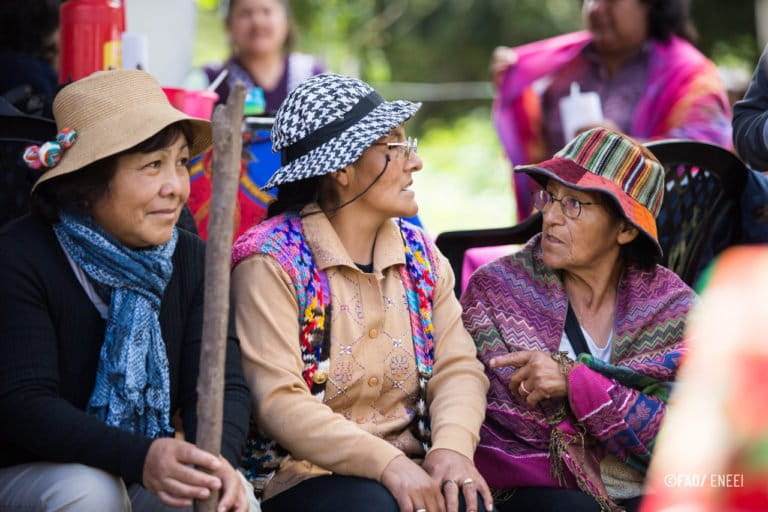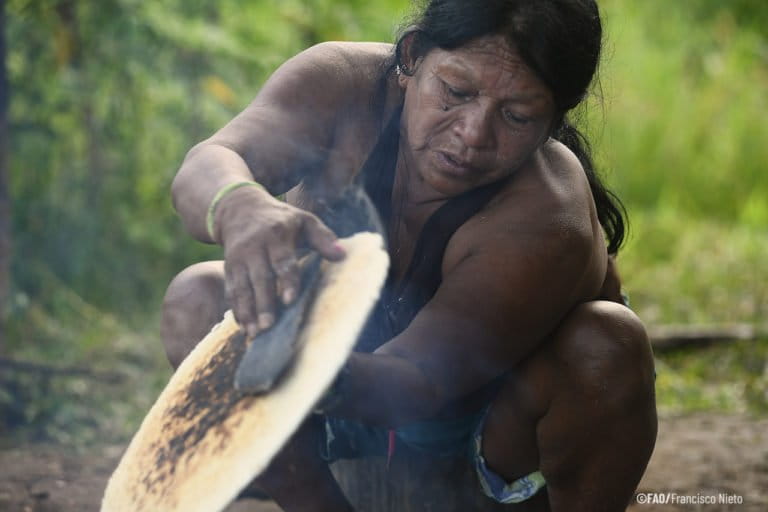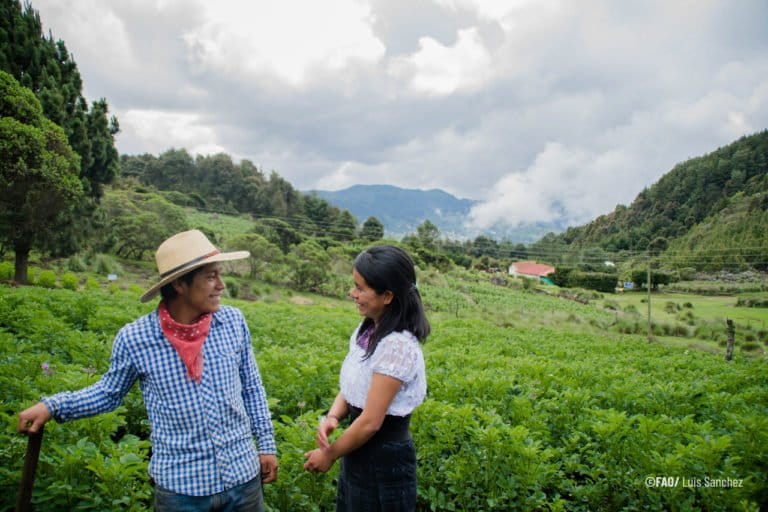- A new report from the Food and Agriculture Organization (FAO) of the United Nations and the Fund for the Development of the Indigenous Peoples of Latin America and the Caribbean (FILAC) draws on more than 300 studies from the last two decades to demonstrate the protection that Indigenous societies provide for forests in Latin America and the Caribbean.
- According to the team’s research, about 45% of the intact forests in the Amazon Basin are in Indigenous territories.
- The forests occupied by Indigenous communities in the region hold more carbon than all of the forests in either Indonesia or the Democratic Republic of Congo, home to the next two biggest swaths of tropical forest after Brazil.
- The report’s authors say investing in securing land rights for Indigenous communities is a cheap and effective way to address climate change, while also helping these communities recover from the effects of the COVID-19 pandemic.
A new report reveals that investing in securing the land rights of Indigenous and tribal communities across Latin America and the Caribbean could cut carbon dioxide emissions at low costs to governments, potentially benefiting the global climate.
“If there’s investment in securing [Indigenous] land and rainforest, then there will be solutions that face climate change,” said report co-author Myrna Cunningham Kain, a leader of the Miskito people in Nicaragua and president of the public rights organization Fund for the Development of the Indigenous Peoples of Latin America and the Caribbean (FILAC). The report was published March 25 by FILAC and the Food and Agriculture Organization (FAO) of the United Nations.
What’s more, the authors say that investing in Indigenous land tenure presents an opportunity to both address climate change and associated issues like biodiversity loss, along with helping hard-hit Indigenous communities recover from the COVID-19 pandemic.

Their research found that these community-managed areas in Central and South America and the Caribbean hold a staggering amount of forest — and carbon. Their review of more than 300 studies shows that Indigenous peoples hold sway over 3.2 million and 3.8 million square kilometers (1.24 million and 1.5 million square miles) of forest — more than a third of Latin America’s forests. It’s also among the least degraded: In the Amazon, around 45% of intact forest lies within Indigenous-occupied land.
Recently, research has shown that human impacts on the Amazon, the world’s largest rainforest, may be pushing it toward a tipping point, beyond which it may lose its ability to bounce back from degradation. Instead, it may slide toward becoming a scrubby savanna.
“When you have almost half of the intact forest in the Amazon in Indigenous and Afro-descendant territories, then they have to be a big part of any discussion about a tipping point,” said David Kaimowitz, manager of the FAO’s Forest and Farm Facility and the lead author of the report.

Over the past two decades, governments across Latin America have implemented programs and policies that bolster Indigenous land rights and leverage traditional forest knowledge. The results demonstrate the protective benefits that Indigenous communities usually provide to forests, Kaimowitz said.
Indigenous-occupied forests in this region hold more carbon than those found in either Indonesia or the Democratic Republic of Congo, home to the next two biggest swaths of tropical forest after Brazil. And both the forests themselves and the carbon they contain are declining more slowly than in non-Indigenous-held areas. Research cited in the report found a loss of 0.3% of the carbon in these forests between 2003 and 2016. Over the same period, non-Indigenous parks and reserves lost 0.6% of their carbon. Outside these spaces, the loss of carbon was a much higher at 3.6%.
But economic difficulties, pressure to extract resources and a lack of public understanding about the importance of Indigenous rights has undermined these Indigenous programs in many places, Kaimowitz said.
“In many countries, they’ve tried them. They’ve succeeded, and now they’re going in the wrong direction,” he told Mongabay. “In just about every country we’ve looked at, government support for these Indigenous territories is declining rather than increasing at a time when they should be increasing dramatically.”

Cunningham said it often comes down to a lack of appreciation for the values inherent in Indigenous cultures.
“A great example of that is Brazil, where there’s a setback in the recognition of Indigenous peoples,” she said. “There’s a threat of going right back to not accepting the value and the rights of Indigenous peoples.“
Mining, timber and agriculture threaten the forests inhabited by Indigenous communities. But there are also concerns with areas set aside for conservation and their impact on the rights of Indigenous peoples. Almost half of the area occupied by Indigenous peoples overlap with parks and reserves in Latin America. While in some instances, that might provide a strong buffer against incursions by loggers or miners that could destroy the forest, it can also create conflict if it makes Indigenous access to land rights more difficult.
But some countries are finding ways to provide communities with titles in cases where there is overlap with protected areas. A recent court case in Panama recognized the claim of the Naso Tjër Di people to their land even though they share it with a cross-border park and a protected forest.

“Practicing these cultures has made it possible for these [conservation] areas of intact forest to remain,” Cunningham said.
Cunningham, who is also a physician, noted that the COVID-19 pandemic is further evidence that Indigenous value systems need to be integrated into the protection of the environment. Studies cited in the report warn that future pandemics could result from the continued destruction of forest.
“We do believe that a lot of what is happening really relates with what Indigenous peoples have been saying traditionally about the relationship between human beings and the elements of nature,” she said.
Banner image of an Indigenous woman crossing a river by Alicia MucúChoc/FAO.
John Cannon is a staff features writer with Mongabay. Find him on Twitter: @johnccannon
FEEDBACK: Use this form to send a message to the author of this post. If you want to post a public comment, you can do that at the bottom of the page.
